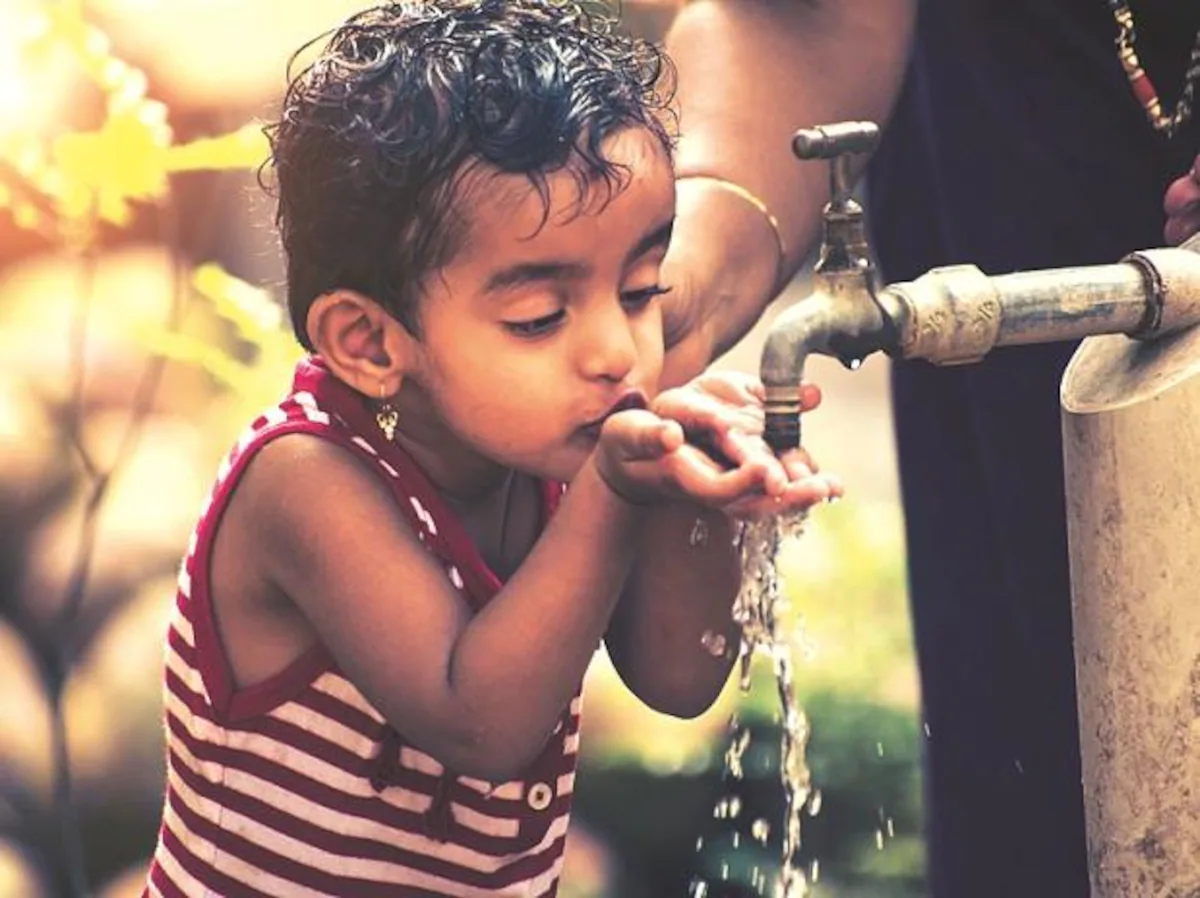Jal Jeevan Mission – Ensuring Access to Water for Every Household in Rural India

INTRODUCTION
“Jal Jeevan Mission”, a central government initiative under the Ministry of Jal Shakti, aims to ensure access of piped water for every household in India.
In his Independence Day speech in 2019, Prime Minister Narendra Modi said that half of the country’s households did not have access to piped water thereby announcing the Jal Jeevan Mission and earmarked Rs 3.5 trillion for the same.
The mission’s goal is to provide to all households in rural India safe and adequate water through individual household tap connections by 2024. This mission not only aimed to provide tap- water to every rural houses of India by 2024 but also implements source of sustainability measures as mandatory elements like recharge and reuse, rain water harvesting and water conservation. Jal Jeevan Mission is based on community approach to create a ‘Jan Andolan’ for water ,thus making it priority to everyone.
The outlay of Jal Jeevan Mission is Rs 3.60lakh crore out of which union government’s share is Rs 2.08 lakh crore and State government share is somewhere around Rs 1.52lakh crore.
The ‘Har Ghar Nal Se Jal’ programme was announced by Finance Minister Nirmala Sitharaman in her Budget 2019-20 speech. This programme forms a crucial part of the Jal Jeevan Mission. The programme aims to implement source sustainability measures as mandatory elements, such as recharge and reuse through grey water management, water conservation, and rain water harvesting.
BACKGROUND
The Central Government assistance to States for rural water supply began in 1972 with the launch of Accelerated Rural Water Supply Programme. It was renamed as National Rural Drinking Water Programme (NRDWP) in 2009, which is a centrally sponsored scheme with fund sharing between the Centre and the States. Under NRDWP, one of the objectives was to “enable all households to have access to and use safe & adequate drinking water within premises to the extent possible”. It was proposed to achieve the goal by 2030, coinciding with the United Nation’s Sustainable Development Goals. But now, it is has been planned to achieve the goal by 2024 through Jal Jeevan Mission (JJM). As per the information available with DDWS, as on 31.3.2019, only 18.33% of rural households i.e., 3.27 Crore out of the total 17.87 Crore rural households in the country, have piped water connection.
WHY JAL JEEVAN MISION IN RURAL AREAS
In rural or remote area of India, people consume contaminated water which subsequently leads to common water borne diseases like diarrhoea and protein energy malnutrition, etc. In order to tackle such water borne diseases, it has been aimed to provide nearly 55 litres of water per day per rural households in India by 2024, which is well ahead of the target stipulated under Sustainable Development Goal particularly Goal No. 6.
This mission not only provides water to houses but also creates job opportunities and helps in boosting rural economy. Further, this Assured tap water supply in rural houses reduces the hard work of women and provides them with quality of time to educate themselves, explore inner talent, teach children, learn innovative skills and explore better livelihood.
Meanwhile achievements of Jal Jeevan Mission is commendable according to collected fact 3.23 crores household tap connections were provided during last 70 years but in 1one year of Jal Jeevan mission , more than 3.73crore house hold taps were provided.
Two states of India Goa and Telangana State (TS) have achieved the distinction of 100 percent household with tap water connection and other villages and district slotted to follow the suit this year.
IDENTIFIED KEY AREAS
This Mission has some identified keys areas like water quality affected habitations, villages in desert and drought –prone areas, SC/ST majority and Sansad Adarsh Gram Yojana villages.
Jal Jeevan Mission not only reached the above notified area but also reached to ‘Tashigang’an innocuous looking village in ‘Lahaul’ and ‘Spiti’ situated at 15256 feet above sea level which has the rare distinction of being the highest polling both of the world hardly consists of hardly 36 voters (according to 2019 report) recently provided the first household tap water connection in September 2020.Tap water connection to ‘Tashigang’ witness the fact that no one is left behind from expressing their choice.
WORLD HEALTH ORGANISATION REPORT
The overarching assessment of the Jal Jeevan Mission was positive, encouraging and applaudable. As per the WHO Report, the mission resulted in averting more than 3,00,000 (three lakh) deaths related to diarrhoea and protein energy malnutrition) between 2014 and October 2019.

